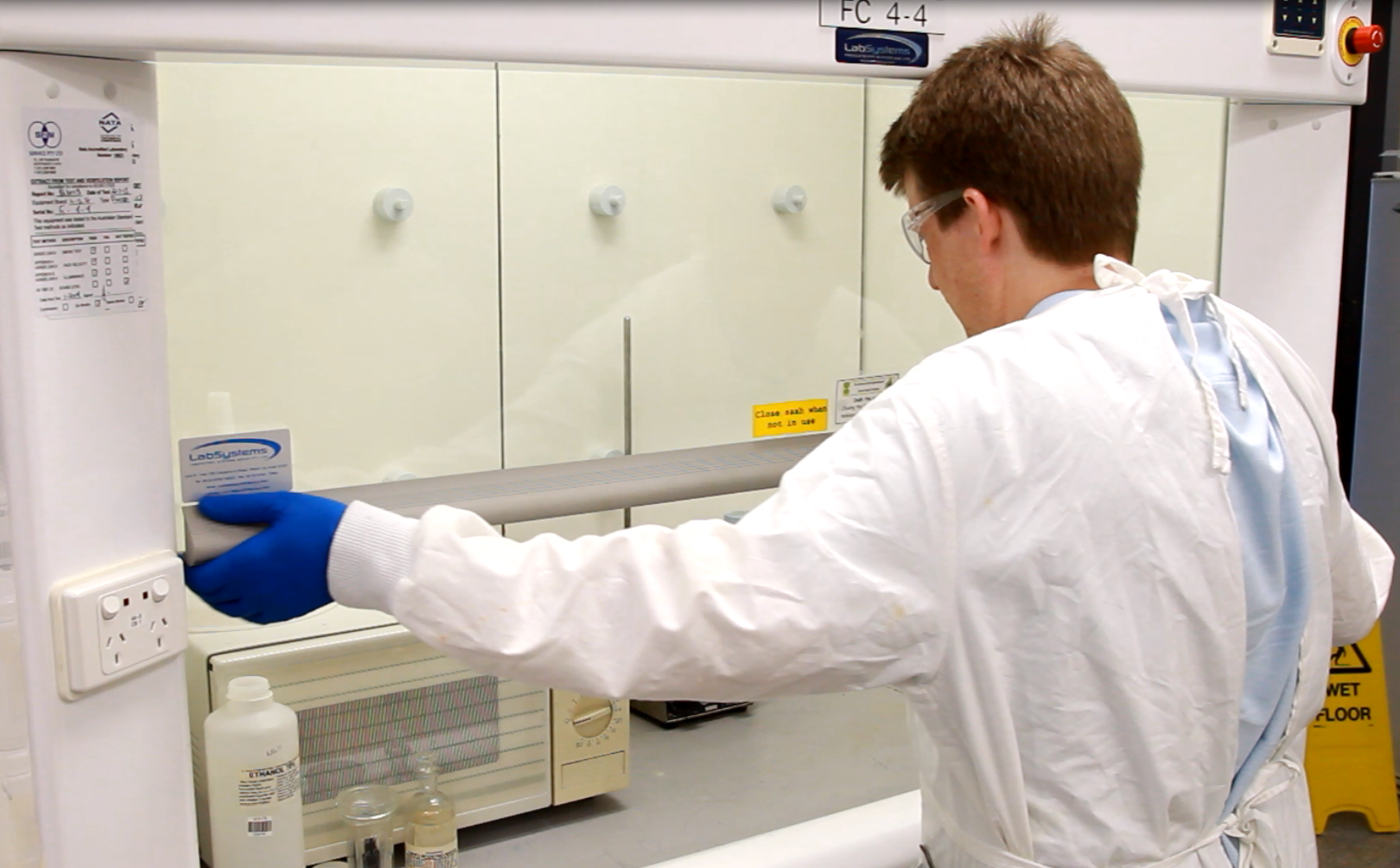 Plenty of important work unfolds in UQ’s laboratories, but some of the equipment required for that work consumes a whole lot of energy. In particular, fume cupboards—ventilated enclosures in chemistry labs where harmful substances can be stored—are huge energy users, pulling air-conditioned and humidity-controlled air out of space at a rate of 500 litres per second per cupboard.
Plenty of important work unfolds in UQ’s laboratories, but some of the equipment required for that work consumes a whole lot of energy. In particular, fume cupboards—ventilated enclosures in chemistry labs where harmful substances can be stored—are huge energy users, pulling air-conditioned and humidity-controlled air out of space at a rate of 500 litres per second per cupboard.
But not all fume cupboards are created equal—there are mechanisms that can help improve their energy efficiency. As part of its comprehensive energy reduction program, UQ’s Energy team has recently installed 29 fume cupboard automatic sash controllers on level 5 of the Australian Institute for Bioengineering and Nanotechnology Building (AIBN) at the St Lucia campus.
These controllers feature a sensor that’s able to automatically detect someone’s presence—so if no one is using the fume cupboard and the sash has been left open, it’ll close automatically within three-and-a-half minutes (and this timing can be modified to suit the needs of different labs). The controls are also easy to use: cupboards can be opened with a simple tap or opened and closed manually.
Most importantly, these fume cupboards represent significant energy savings: based on analysis of the AIBN project, the Energy team estimates a saving of 3,600 kWh per year per fume cupboard—for the 29 AIBN cupboards, that’s equal to the annual energy consumption of over 17 average Australian households.
The cupboards have also received overwhelmingly positive feedback from lab users. Luke Matthews, Infrastructure Manager at AIBN, and Stephen Coombs, Manager at the School of Chemical Engineering, have reported that AIBN lab users are very happy with the new fume cupboard controls and are keen to have them feature on all fume cupboards from now on. ‘They tried a few different set-ups before,’ revealed Mr Coombs, ‘but now they wouldn’t go back to completely manual sashes’.
A future roll-out of automatic sash controllers in other buildings is currently under investigation as part of the University’s commitment to reducing emissions.



